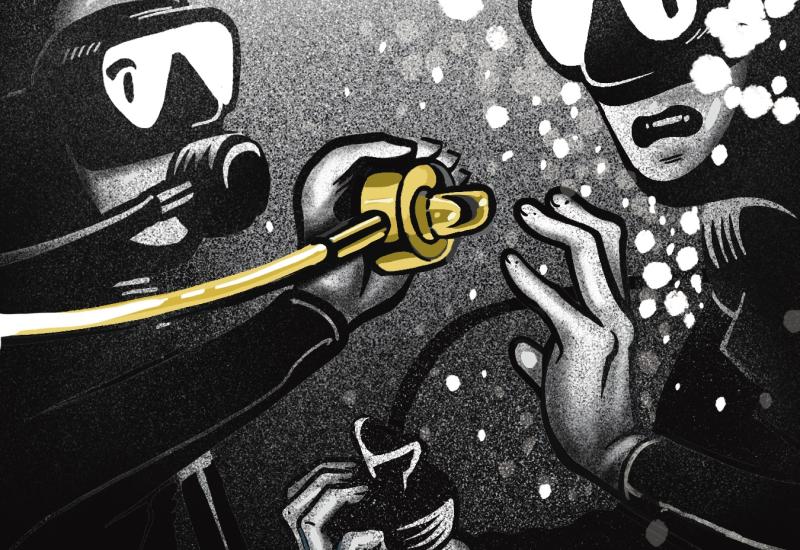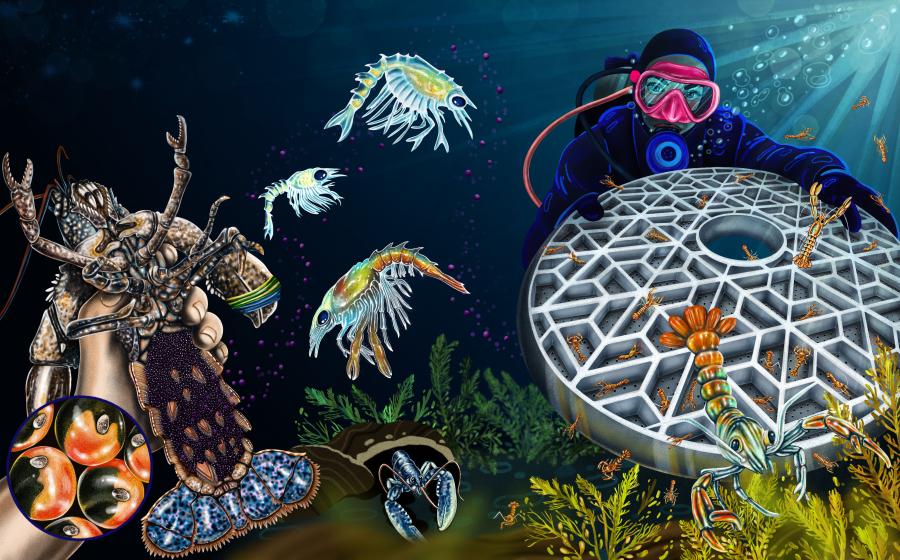Going It Alone

Carlo GiambarresiA cave diver has no one to turn to when he runs out of air.
Deacon was confident in his skills, training and abilities. Because of that, he preferred to dive alone. He didn’t know any other divers who could dive where he wanted to dive, and frankly he felt that diving with others just got in the way and kept him from making the dives he wanted to make.
As he rounded a corner in the cave system he was exploring, he realized he had made a mistake somewhere. He’d lost the line he had trailed through the system, and now he wasn’t sure how to get back out. He began a methodical search, but he knew he had a limited air supply.
The Diver
Deacon was a 53-year-old technical diver with cave-diving experience. He mixed his own breathing gas and maintained his own gear. He preferred to explore cave systems alone, and often used specialty gas mixes for his dives. He had a history of seizures and took medication for his condition.
The Dive
Exploring a new cave system was always exciting for Deacon. This system sprawled miles underground, and he hoped to find a new section he could explore and map. Deacon attached a diving reel to an anchor point just inside the cave entrance and began his dive. He was diving a nitrox mix with a slightly elevated concentration of oxygen: 27 percent oxygen and 73 percent nitrogen. The cave system was known to be relatively shallow, so the oxygen concentration wouldn’t be a problem, and it would give him a little extra time without worrying about decompression status.
The Accident
Deacon told a couple of friends his plan for the day and where he was going to dive. When he didn’t return a few hours later, they alerted the authorities. The police organized a team of divers trained in cave recovery, and Deacon’s body was found the next day inside the cave system. He was 300 feet from the cave's entrance, at a depth of 46 feet. He had completely exhausted his breathing gas.
The recovery divers reported that Deacon’s fin was tangled in the reel line he had been following but didn’t think that was the cause of the accident. The medical examiner ruled Deacon’s death an accidental drowning caused by scuba diving.
Read More: Lessons for Life
Analysis
Since Deacon was alone on the dive, there is no way to know what happened to cause this accident. He was experienced and well-equipped for the diving situation. Somehow, he still ran out of breathing gas underwater and drowned. Whether he lost the line, as described earlier, and then found it but had overstayed his time, or whether he simply lost track of time and his breathing-gas supply is unknown. He was on the line and on his way back toward the entrance when he ran out of breathing gas.
Cave divers typically plan their dives to hold (at a minimum) one-third of their breathing gas in reserve for emergency purposes. They use one-third of their air for the exploration phase and plan to use one-third for the exit. That leaves plenty of gas in case they get in trouble.
What we do know is he ran out of gas and drowned. There can’t be any worse way to die than knowing you are not going to make your way back out of a cave before you run out of air. You are literally watching your life support, along with your pressure gauge, drop to zero.
There are some divers, including some cave divers, who choose to dive alone. They carry additional redundancies and even more breathing gas with them in case a problem arises. Deacon was not carrying an additional emergency breathing-gas supply.
Deacon was also known to take an anti-seizure medication. The medical examiner found no trace of the medication in his system during the autopsy.
The main concern for people with epilepsy — or other conditions that might cause seizures — and scuba diving is the risk of having a seizure and losing consciousness while underwater. A seizing diver would likely lose control of his regulator and drown.
Again, we can’t know exactly what happened to Deacon, but it is possible he had a seizure inside the cave system and lost consciousness, without losing control of his regulator. That is a big assumption, but it is possible. When he regained consciousness, he could have made for the exit but was too far inside at that point to make it all the way out.
The alternative is that he made a mistake and ran out of air because he pushed his reserve supply or failed to monitor his breathing-gas supply and simply ran out of gas without knowing he was in trouble until it was too late.
If Deacon had been diving with a buddy, it is possible his buddy could have helped him with whatever problem arose inside the cave. His buddy could have also encouraged him to turn the dive earlier and head back for the surface when they reached the first third of their breathing-gas supply. When you choose to dive alone, there is no one there to help you should you get in trouble.
Just like running out of gas in your car, the problem comes from trying to go just a little farther or not noticing your gauge is on empty. But running out of breathing gas on a dive, especially inside an overhead environment like a cave, is deadly.
Lessons for Life
Monitoring your breathing gas. Don’t run out of gas underwater. It is a simple thing and something you were taught in your very first diving class. There is no AAA underwater to bring you more.
Diving alone. If you are going to dive alone, seek out the additional training and obtain the redundant equipment you need to do it safely. Better yet, get a buddy and dive with a friend.
Compatible medical conditions. Talk to your doctor, or a doctor knowledgeable about diving, to make sure any and all medical conditions are safe to dive with.
What Is Lessons for Life?
We're often asked if the Lessons for Life columns are based on real-life events. The answer is yes, they are. The names and locations have been removed or altered to protect identities, but these stories are meant to teach you who to handle a scuba diving emergency by learning from the mistakes other divers have made. Author Eric Douglas takes creative license on occasion for the story, but the events and, often, the communication between divers before the accident are entirely based on incident reports.










